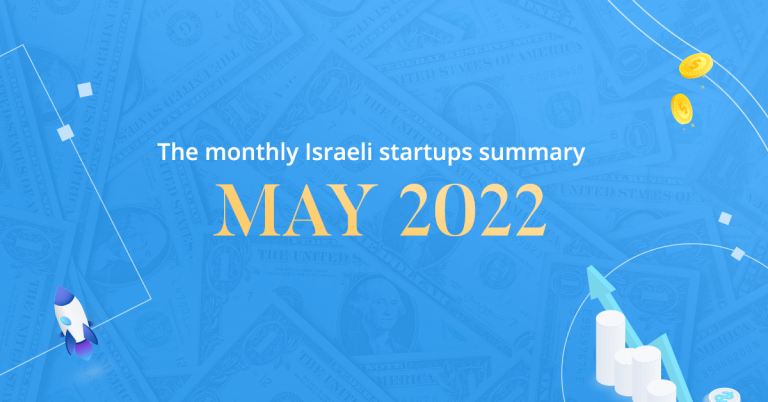Investment meetings often feel like an enigma: no matter how many you may attend, you can never quite know what to expect and how it will turn out.
You go to a meeting with a potential investor confident that your idea is THE next thing that will change the world ‒ but somehow the person on the other side of the table doesn’t think so, and decides to pass. Why does that happen?
There are most likely many reasons, but the first thing to understand is that something in the meeting must have turned the potential investor off, and it may have been something that had nothing to do with your great idea, but rather more to do with how you presented yourself.
Know what you’re getting into
To understand how to prepare for these important meetings one needs to first spend some time learning how venture capitalists think and what are they looking for. Venture capitalists are people with financial means, but the key factor in their thinking is beyond merely making money: they want to put their money to work intelligently, using the right idea and in partnership with the right people.
For them, the most important goal is not finding the best idea, but finding an entrepreneur with whom they can connect and do business. Without the potential for such a connection, the deal is likely to be doomed. Venture capitalists tend to put their money on a person more than on a company. Therefore, the first impression made by an entrepreneur on a potential investor must be positive, professional and credible.
Choose your partners carefully
The potential relationship between partners is a key factor in investors’ decision whether to invest or not, and an investor is likely to draw an impression on the future partnership from the potential partners’ presentation and their answers to questions. As such, it is best to only bring essential team members to investment meetings; this often may mean that only the CEO representing the company attends. The initial team of a startup is expected to be small and lean, and a team that is too large may raise eyebrows. If you do choose to bring some of your team members to the meeting, choose who you bring carefully; it is best to bring those who can effectively contribute to the discussion with confidence. Someone sitting quietly at a meeting may arouse unease or suspicion.
If the meeting goes well and the investor expresses interest, their next step will be researching the business history of the partners. If problems are found, such as insolvency or a dispute among partners that reached the courts, chances are that the investor will abandon the project.
The investor will also likely research the team’s social media profiles, including statuses and pictures. Be careful about the things you post, keeping in mind that they not only reflect you, but also your company and its product.
Always be prepared
Perhaps it goes without saying, but it is incredibly important that you are familiar with your product ‒ so that when you are asked a professional question by the investor, you can answer it with full competence and confidence. Come to the meeting well-prepared by taking the time to do “dry runs” for the meeting ‒ both alone and with the help of your partners who should challenge you with professional questions the investor may ask in the real meeting. Such dry-run meetings can improve your presentation, as well as your memory ‒ making it easier to answer difficult questions in real-time, in a real setting. If you do find yourself in a situation where you don’t know the answer to a question, the best strategy is to be honest. Don’t make up an answer ‒ an investor is much more likely to appreciate you saying “I don’t know the answer to that, but I will check and get back to you”, rather than an answer you have clearly just made up. And if you do say that, be sure to take the time to check and get back to them with the answer, it shows professionalism and commitment.
Questions you can almost guarantee being asked in investment meetings include the state of the relevant market segment, existing competitors, and the latest innovation developments. Know how to answer these questions! Many startup founders answer along the lines of “There is no real competition, our idea is only somewhat similar to…”. That is not a professional response. True, their product is not exactly the same as yours ‒ but you should still know the sector and be able to show the investor that you are well-informed, and that you did your homework before you decided to develop your particular idea. A potential investor wants to know that you are aware of your competition, and are offering a competitive advantage in the relevant market segment. You should be able to point out the mistakes that may have been made and what can be learned from them ‒ after all the goal is to invest in an advantage over something else, something that makes you think “Wow, how come no one thought of this before?”
Show confidence
Body language is an important factor for a successful meeting. If you are prone to shaking, use a pointer, keep your hands unexposed and avoid touching the mouse when you are not using it. Mind your facial expressions and your eyes: failing to look at the other person may broadcast insecurity. Handshakes are also very important: don’t wait for the other person to offer their hand‒ proactively initiate the handshake and project strength, but without breaking anyone’s hands.
Venture capitalists care about their personal image no less than they do about the image of businesses in which they invest, which for you may mean that you need to make a clear distinction between your service, and the demographics to which the service is aimed. For example, many investors are not willing to be involved in gambling; if your startup provides services to gambling sites, it is important to stress the generality of your business to conservative investors, stressing the fact that this is a general solution for payments, which only incidentally may also be used by gambling websites, among others.
The key is compromising
If all goes well, you will move on to the next stage: receiving the first agreement draft from the lawyers, to which you must respond to the investor with your remarks. The capital-raising process is a long and difficult one. You will need a lot of patience and flexibility, as well as an understanding than an investor who is putting a lot of money on the line wants to have certain protections and assurances that the money is used responsibly. While you certainly should diligently review the agreement with your lawyer to protect your and your company’s interests, it is important to keep in mind that when you refuse certain conditions in such agreements, it may arouse suspicion with the potential investors, as these conditions are there to protect them and their investment. Such refusal may even halt the entire process and deter the investor from the deal. For example, a section of the agreement dealing with salaries is critical ‒ after all, no one wants to invest $100 million, only to have the founders raise their salary threefold the day after the agreement has been signed.
In short, investors are looking to invest in inspiring entrepreneurs with well-developed ideas, in order to be part of something big and maximize their returns. You want an investor who leaves the meeting inspired, someone who may have come in skeptical or reticent, but gradually became more interested and active, bringing new ideas to the table, and getting excited about your business. You don’t want someone who is paying you money to boss you around, but someone who is investing in order to help you and your company reach the next level. It’s not just about the investors finding you- YOU also need to find the right investors for you and your company. Wishing you the best of luck in finding and securing the investors of your dreams!
Written by Lital Kalkshtein, CEO of GKI Group










